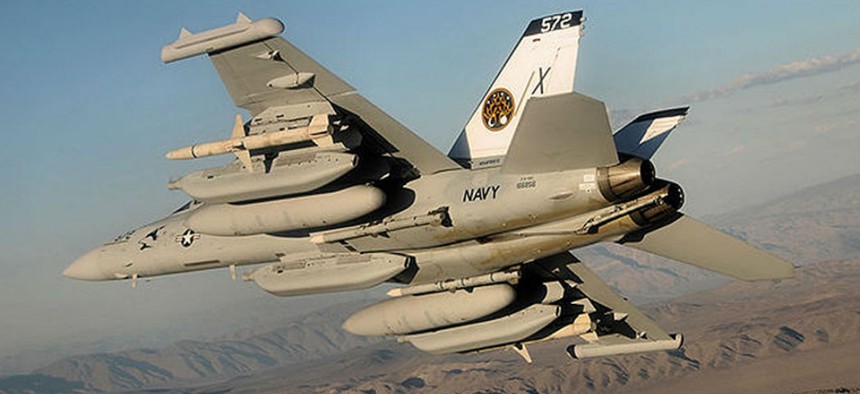New Northrop, Navy electronic warfare tech expands aircraft attack envelope
Northrop’s next generation electronic warfare environment tech is designed to close multiple beam jammer gaps and cover a fuller spectrum of frequency bands.
In the Navy’s quest to build the next generation of its electronic warfare signal environment, or NEWEG, Northrop Grumman will provide the system’s radio frequency generation technology to ensure aircraft are optimized to face a greater number and wider variety of threats than ever before.
Northrop announced on Monday that it would provide this technology for Naval Air Systems Command’s (NAVAIR) ongoing effort to improve the command’s Advanced Systems Integration Lab. The lab is a facility that tests and evaluates an aircraft's electronic systems and its performance in response to electronic warfare threats. It serves as a mid-point between simulations performed on computers and the final system.
Northrop’s radio frequency generation technology, to be built by the company’s Amherst Systems office, builds upon previous iterations in order to ensure that a wide variety of simulated electronic warfare environments can be replicated. Though a core component of this system, the Advanced Pulse Generator (APG), has been fielded in prior systems, Northrop is continuing to refine its capabilities for NEWEG. According to a Northrop briefing, the radio frequency generator technology will also be modular and have plug-and-play compatibility, “making it directly adaptable for use in laboratory, anechoic chamber and range applications.”
According to a NAVAIR briefing, an important goal of the NEWEG program is the closing of the “multiple beam jammer gap.” This gap means that multiple simulators or entire testing facilities have to be used in order to test the full spectrum of radio frequency bands. According to Brian Woode, the deputy division head at NAVAIR’s Integrated Battlespace Simulation & Test Department, the NEWEG system will “cover the full band from 70 megahertz to 40 gigahertz.”
NEXT STORY: Air Force awards $1 billion cloud deal




